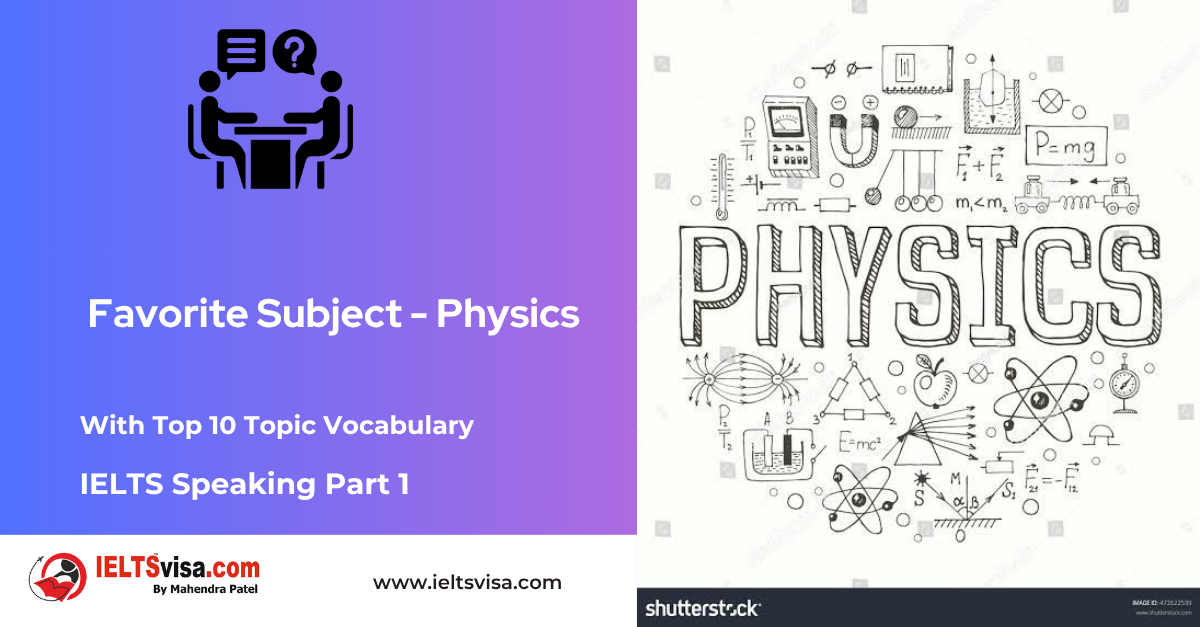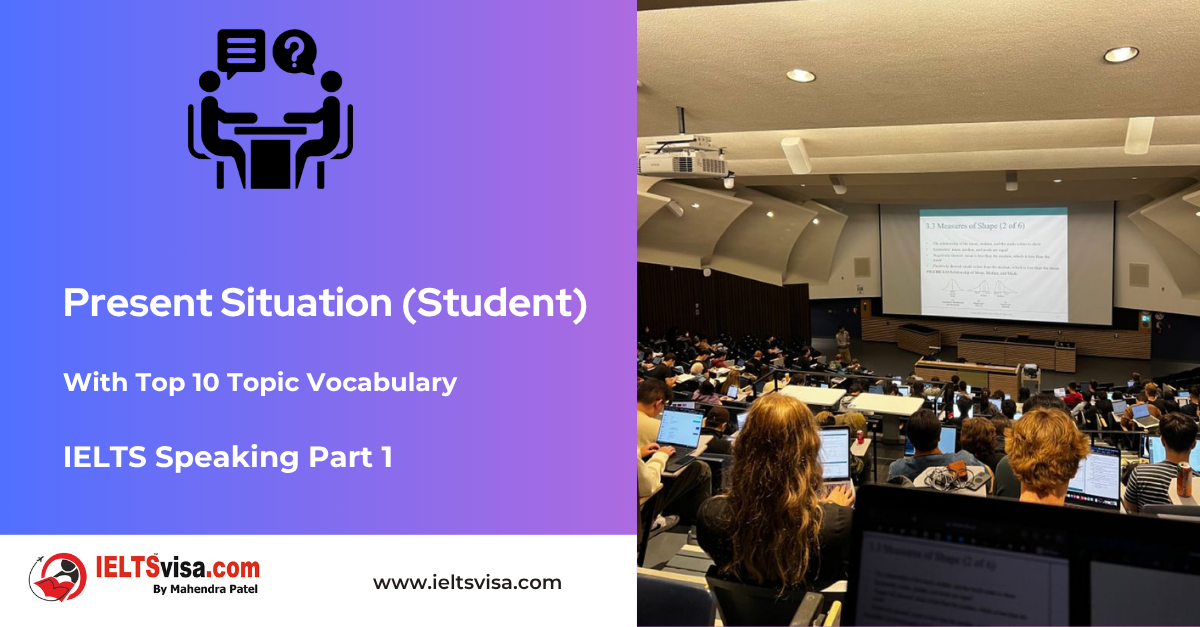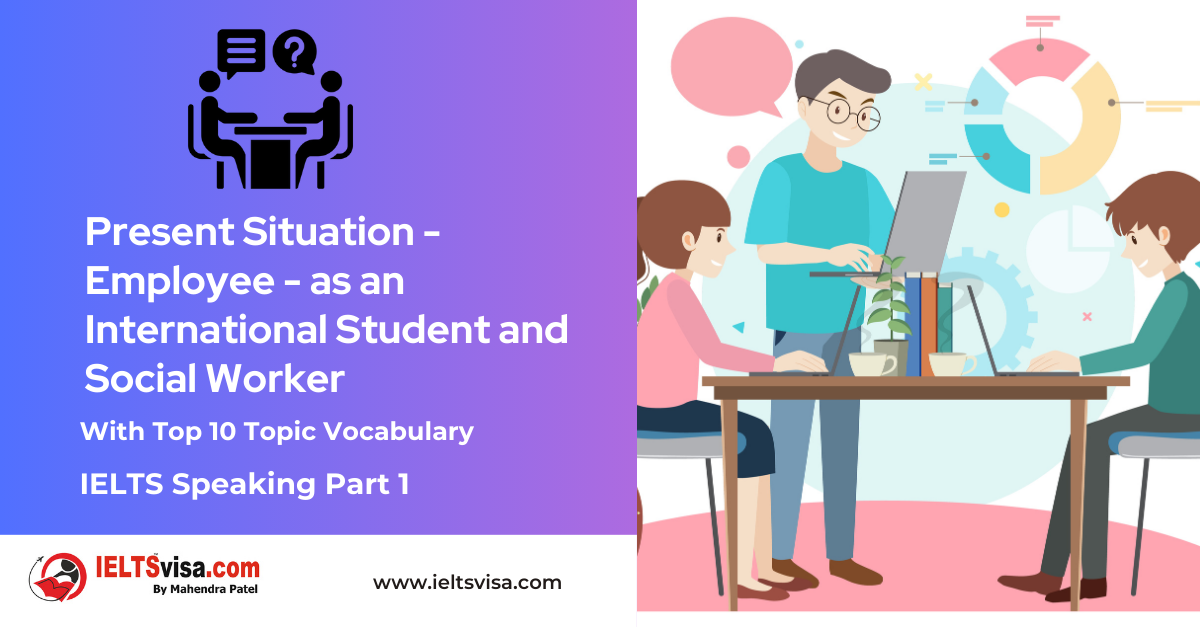Active and Passive Voice
Grammar for IELTS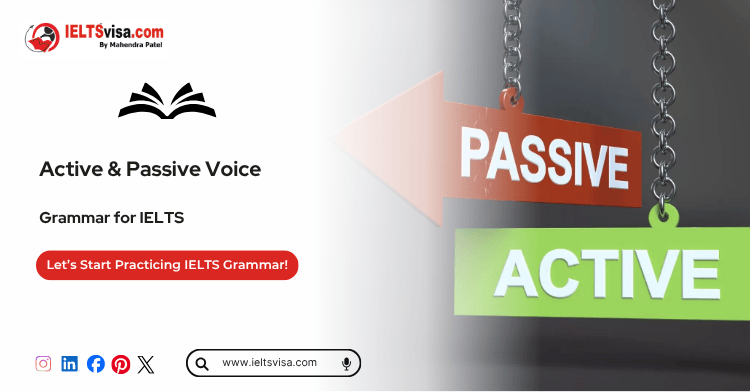
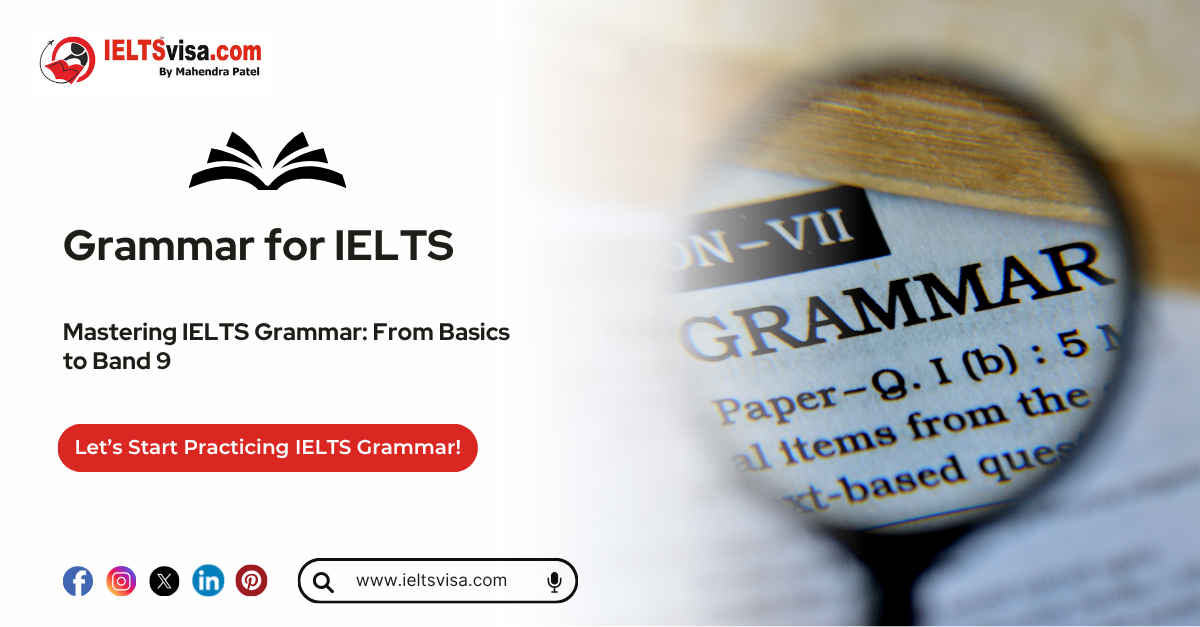
Active and Passive Voice Rules of English Grammar
Understanding the Active and Passive Voice is an essential part of mastering English grammar. These concepts are not only crucial for clear communication but also frequently tested in various competitive exams. This guide will help you understand the rules of active and passive voice, including their definitions, usage, examples, and tips for effective application. Let’s dive in!
Table of Contents
1. What Is Voice in Grammar?
2. Types of Voices
-
- Active Voice
- Passive Voice
3. Active and Passive Voice Conversion Rules
4. Forms of Active and Passive Voice for All Tenses
5. Common Mistakes in Using Active and Passive Voice
6. Practice Questions and Answers
7. Frequently Asked Questions (FAQs)
1. What Is Voice in Grammar?
The voice of a verb indicates whether the subject in the sentence performs the action or receives the action.
Active Voice: The subject performs the action.
-
- Example: The cat chased the mouse.
Passive Voice: The subject receives the action.
-
- Example: The mouse was chased by the cat.
2. Types of Voices
Active Voice
Definition: When the subject of a sentence performs the action, the sentence is in the active voice.
-
- Characteristics:
-
- Direct and clear.
- Focuses on the subject.
-
- Examples:
- She writes a letter.
- The boy threw the ball.
- Characteristics:
Passive Voice
Definition
Definition: When the subject of a sentence receives the action, the sentence is in the passive voice.
-
- Characteristics:
- Focuses on the action or the object.
- The subject may be omitted if not necessary.
- Examples:
- A letter is written by her.
- The ball was thrown by the boy.
- Characteristics:
Active and Passive Voice Conversion Rules
Converting a sentence from active voice to passive voice requires following specific rules:
Rule 1: Identify the Subject, Verb, and Object
- Example:
-
- Active: She sings a song.
- Subject: She, Verb: sings, Object: a song.
-
Rule 2: Swap the Subject and Object
The object in the active voice becomes the subject in the passive voice.
-
- Passive: A song is sung by her.
Rule 3: Use the Correct Form of the Verb
The verb is changed to its past participle form, preceded by an auxiliary verb (is, am, are, was, were, etc.).
Rule 4: Add the Preposition “by”
- Example:
- Active: The chef cooks the meal.
- Passive: The meal is cooked by the chef.
Rule 5: Adjust Pronouns
Pronouns in the active voice are changed as follows:
|
Active Voice Pronoun |
Passive Voice Pronoun |
|
I |
Me |
|
We |
Us |
|
He |
Him |
|
She |
Her |
|
They |
Them |
|
You |
You |
|
It |
It |
4. Forms of Active and Passive Voice for All Tenses
Here’s how active and passive voice sentences change across tenses:
Simple Present Tense
-
- Active: She writes a book.
- Passive: A book is written by her.
Present Continuous Tense
-
- Active: They are reading a story.
- Passive: A story is being read by them.
Present Perfect Tense
-
- Active: He has completed the project.
- Passive: The project has been completed by him.
Simple Past Tense
-
- Active: She baked a cake.
- Passive: A cake was baked by her.
Past Continuous Tense
-
- Active: They were playing football.
- Passive: Football was being played by them.
Past Perfect Tense
-
- Active: She had delivered the message.
- Passive: The message had been delivered by her.
Simple Future Tense
-
- Active: He will paint the wall.
- Passive: The wall will be painted by him.
Future Perfect Tense
-
- Active: She will have completed the assignment.
- Passive: The assignment will have been completed by her.
5. Common Mistakes in Using Active and Passive Voice
Mistake 1: Incorrect Verb Form
-
- Incorrect: The letter wrote by him.
- Correct: The letter was written by him.
Mistake 2: Omitting the Subject in Passive Voice
-
- Incorrect: Was painted yesterday.
- Correct: The house was painted yesterday.
Mistake 3: Mixing Tenses Incorrectly
-
- Incorrect: She is writing a book was completed by her.
- Correct: The book is being written by her.
6. Practice Questions and Answers
Convert the following sentences from active to passive voice:
1. Active: The gardener waters the plants.
-
- Passive: The plants are watered by the gardener.
2. Active: She is singing a beautiful song.
-
- Passive: A beautiful song is being sung by her.
3. Active: They built a new house.
-
- Passive: A new house was built by them.
4. Active: He will complete the project.
-
- Passive: The project will be completed by him.
Frequently Asked Questions (FAQs)
Q1: When should I use passive voice?
Use passive voice when:
-
- The doer of the action is unknown or unimportant.
- You want to emphasize the action rather than the subject.
Q2: Can every sentence be converted into passive voice?
No, sentences without a direct object (intransitive verbs) cannot be converted into passive voice.
-
- Example: She sleeps. (No object to convert)
Q3: What are common auxiliary verbs used in passive voice?
-
- Present: is, am, are
- Past: was, were
- Perfect: has been, have been, had been
- Future: will be, shall be

Our Books
Master IELTS Speaking Part 1
IELTS Writing Task 1 Book
IELTS Writing Task 2 Book
Practice IELTS Other Modules
IELTS Listening
The IELTS Listening test assesses how well you can understand spoken English in various contexts. It lasts about 30 minutes and is divided into four sections with a total of 40 questions. The listening tasks become increasingly difficult as the test progresses.
IELTS Academic Reading
The IELTS Academic Reading section assesses your ability to understand and interpret a variety of texts in academic settings. It is designed to evaluate a range of reading skills, including skimming for gist, reading for main ideas, reading for detail, understanding inferences, and recognizing a writer's opinions and arguments.
IELTS Speaking
The IELTS Speaking test assesses your ability to communicate in English on everyday topics. It lasts 11-14 minutes and consists of three parts: introduction, cue card, and a discussion based on the cue card topic.
IELTS General Reading
IELTS General Reading tests your ability to understand and interpret various types of texts. Here are some key areas and types of content you can expect to encounter in the reading section, along with tips for effective preparation.
IELTS Academic Writing Task 1
In IELTS Academic Writing Task 1, you are presented with a visual representation of information, such as graphs, charts, tables, or diagrams, and you are required to summarize, compare, or explain the data in your own words.
IELTS General Writing Task 1
In IELTS General Writing Task 1, you are required to write a letter based on a given situation. The letter can be formal, semi-formal, or informal, depending on the prompt. Here’s a breakdown of the key components to include in your letter
IELTS Academic Writing Task 2
In IELTS Academic Writing Task 2, you are required to write an essay in response to a question or topic. Here’s a guide to help you understand the essential elements of this task
IELTS Exam Tips
To succeed in the IELTS exam, practice regularly, familiarize yourself with the test format, improve your vocabulary, develop time management skills, and take mock tests to build confidence.
Grammer for IELTS
Grammar is the foundation of effective communication in English. Understanding tense usage, subject-verb agreement, and sentence structure enhances clarity and coherence in writing and speaking.
Vocabulary for IELTS
Vocabulary plays a crucial role in the IELTS (International English Language Testing System) exam, especially in the Speaking and Writing sections. Here’s an overview of why vocabulary is important and how it impacts your performance
RECENT IELTS SAMPLES QUESTIONS AND ANSWERS
IELTS Speaking Part 1 – Favourite Sujbect – Physics
IELTS Speaking Part 1 - Favourite Sujbect - Physics Q: What is your favourite subject? A: My favourite subject...
IELTS Speaking Part 1 – Present Situation (Student)
IELTS Speaking Part 1 - Present Situation (Student) Q1: Are you a student or do you work?A: I’m a full-time...
IELTS Speaking Part 1 – Present Situation – Employee – as an International Student and Social Worker
IELTS Speaking Part 1 - Present Situation - Employee - as an International Student and Social Worker Q1: Are...
IELTS Speaking Part 1 – Persent Situation – Employee- as an Electric Engineer
IELTS Speaking Part 1 - Persent Situation - Employee- as an Electric Engineer Q1: What do you do for a...
IELTS Speaking Part 1 – Persent Situation – Employee – as an Software Engineer
IELTS Speaking Part 1 - Persent Situation - Employee - as an Software Engineer Q1: What do you do for a...
IELTS Speaking Part 1 – Persent Situation – Married
IELTS Speaking Part 1 - Persent Situation - Married Q1: Are you married?A: Yes, I am married. My spouse and I...

